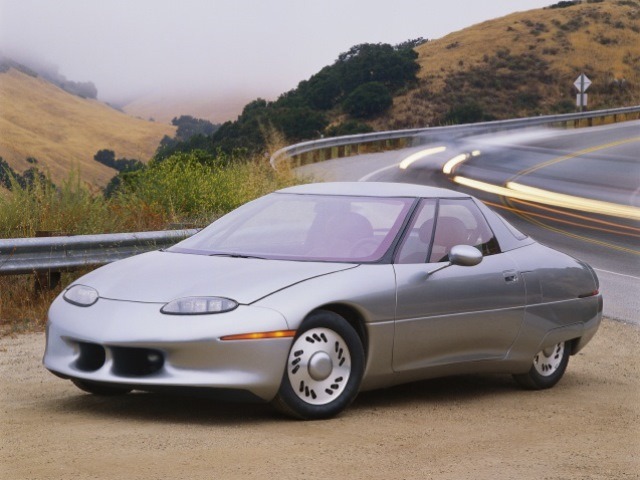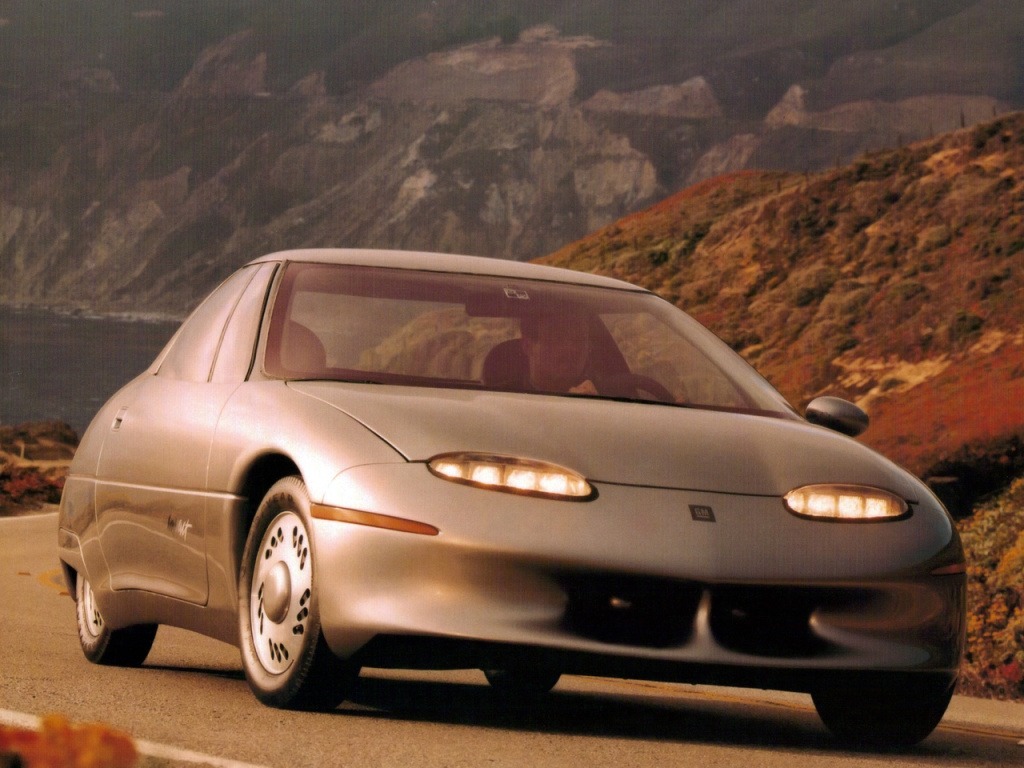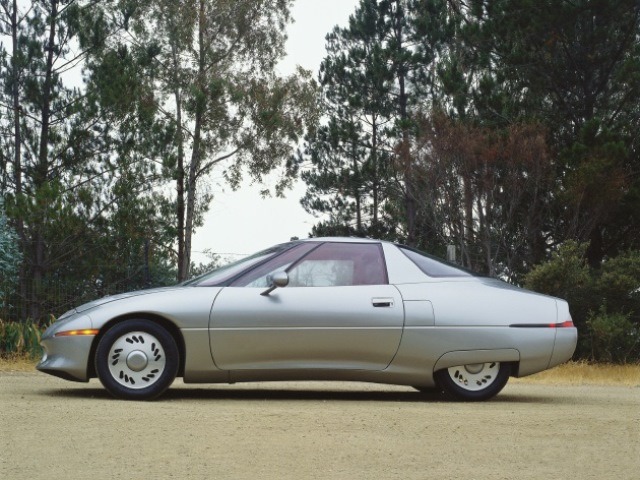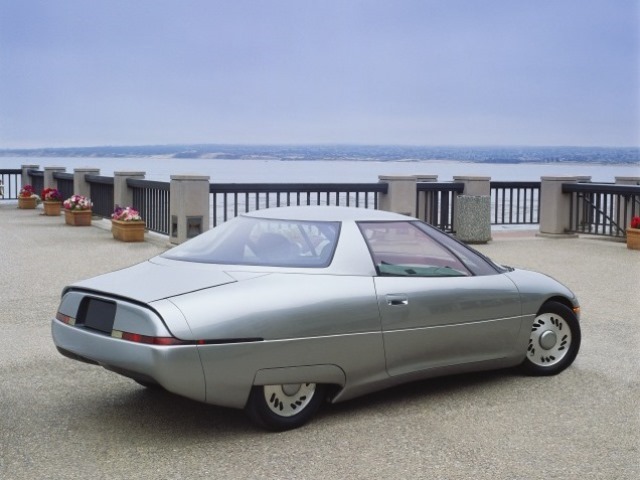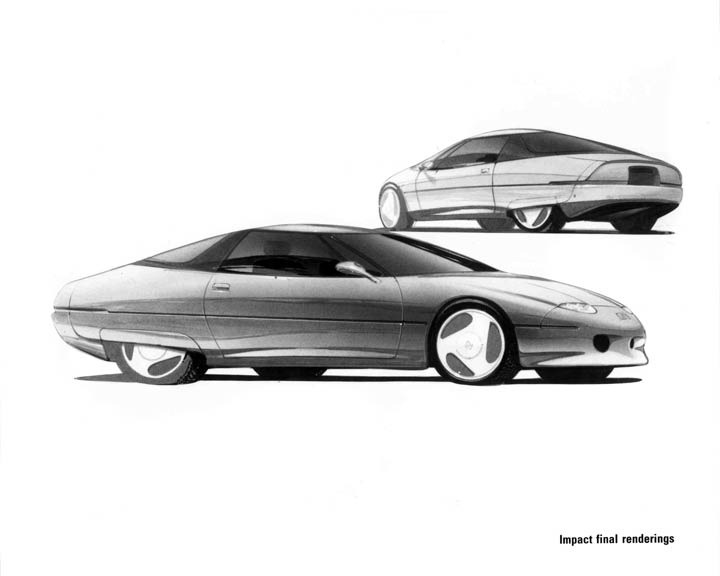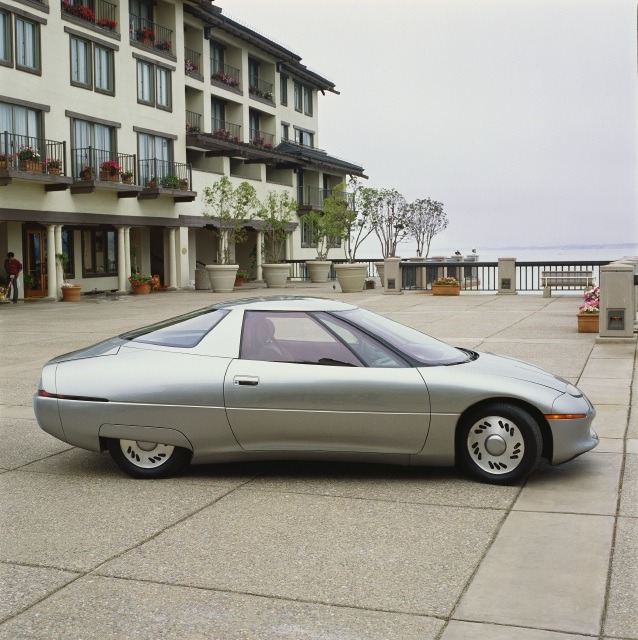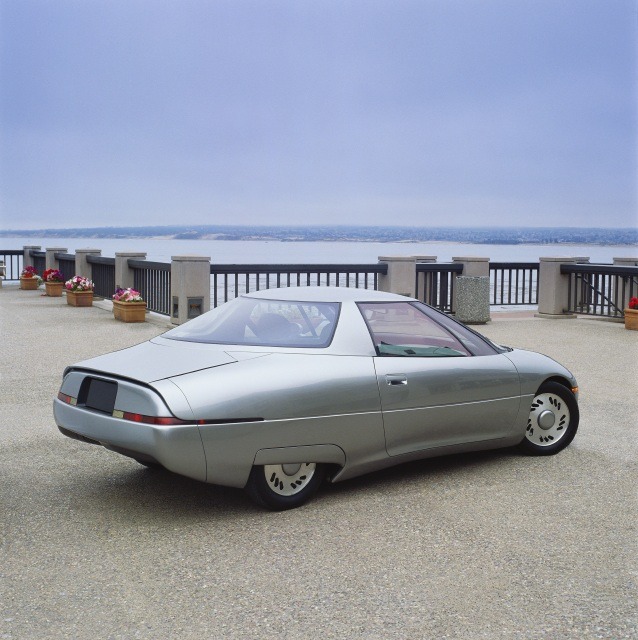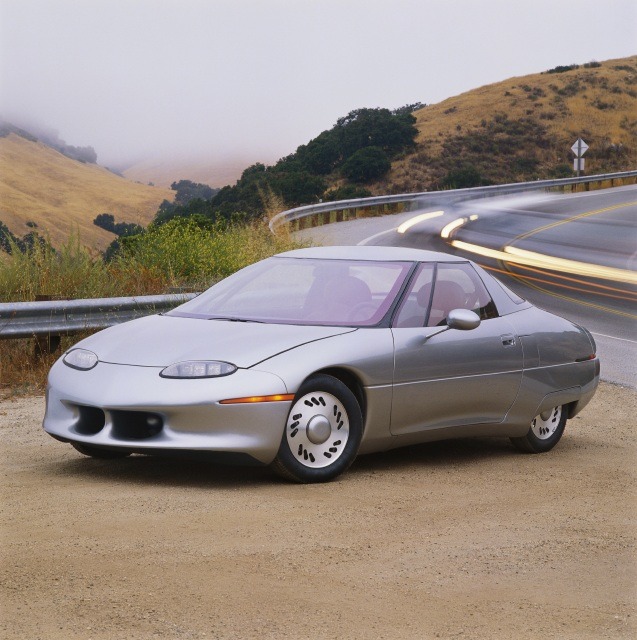Late in 1996 General Motors, the biggest of America’s Big Three car makers, put the EV1, its first electric vehicle, into production. This iniative sprang from GM’s Impact concept car that was unveiled in 1990.
The stimulus for Corporation to develop this project was the California Clean Air Act which required that 10 per cent of all new cars sold in the state by 2003 should have zero exhaust emissions. The only powered vehicle that can meet this requirement is the electric car.
While such vehicles have been around for almost as long as the automobile, the Impact sports coupe did not feature the long-awaited breakthrough in battery technology that is so essential to make it a truly viable proposition.
Electric Concept
It did, however, have the virtue of having been designed from the outset as an authentic electric car rather than a modified petrol-engined one.
To offset the weight of its batteries, much of the Impact’s structure was made of composite materials and the glass-fibre coupe bodywork, created by in-house , recorded a drag coefficient of 0.19 – the lowest ever achieved in the GM wind tunnel.
This concept car turned the scales at 998kg (2200lb) with the batteries accounting for a substantial 408kg (900lb).
There were 32 of these sealed 10-volt lead acid AC Delco units that ran centrally along length of the car, forming a sort of ‘transmission tunnel’.
At the Impact’s heart was a unit that converted DC power to AC current. As a result, more efficient three-phase AC electric motors could be used. Two of them drove the car’s front wheels and, accordingly, no weightly differential or gearbox were needed.
Dynamic Braking
A further innovation was the use of regenerative braking which meant that the electric motors were transformed into dynamos that charged the batteries when the driver applied the brakes.
A two-seater, the Impact was intended to be short-distance car. GM claimed a top speed of 161 km/h (100 mph) and a 0-96 km/h (60 mph) acceleration figure of eight seconds. It had a range of 193 km (120 miles) but the batteries needed recharging every six hours.
This requirement underlined the need for improvements in battery technology, and in 1991 General Motors joined with it and rivals to pool their research in this crucial area. It was another six years before EV1 entered production in 1996 and, although outwardly resembling the Impact concept, some significant changes had been made below the surface. Unlike the original, which had two electric motors, the production version has one and thus fewer batteries.
Design
There was no exhaust pipe and the car’s impressive aerodynamics were aided by a smooth undertray. Its low drag coefficient, about half that of the average family saloon, was also aided by an absence of bumpers.
Wood, Jonathan (1997) Concept Cars, Paragon, ISBN 0-75252-084-9.


